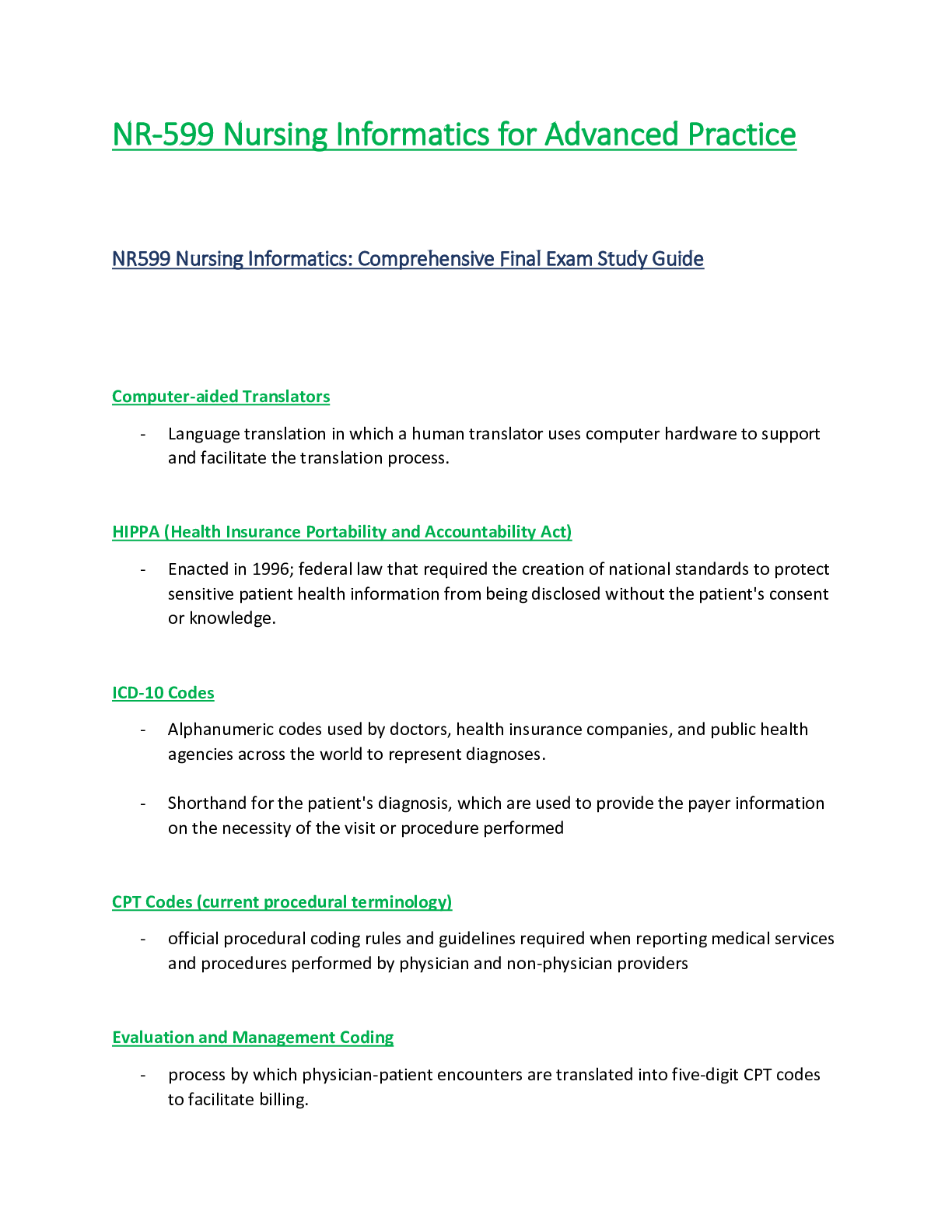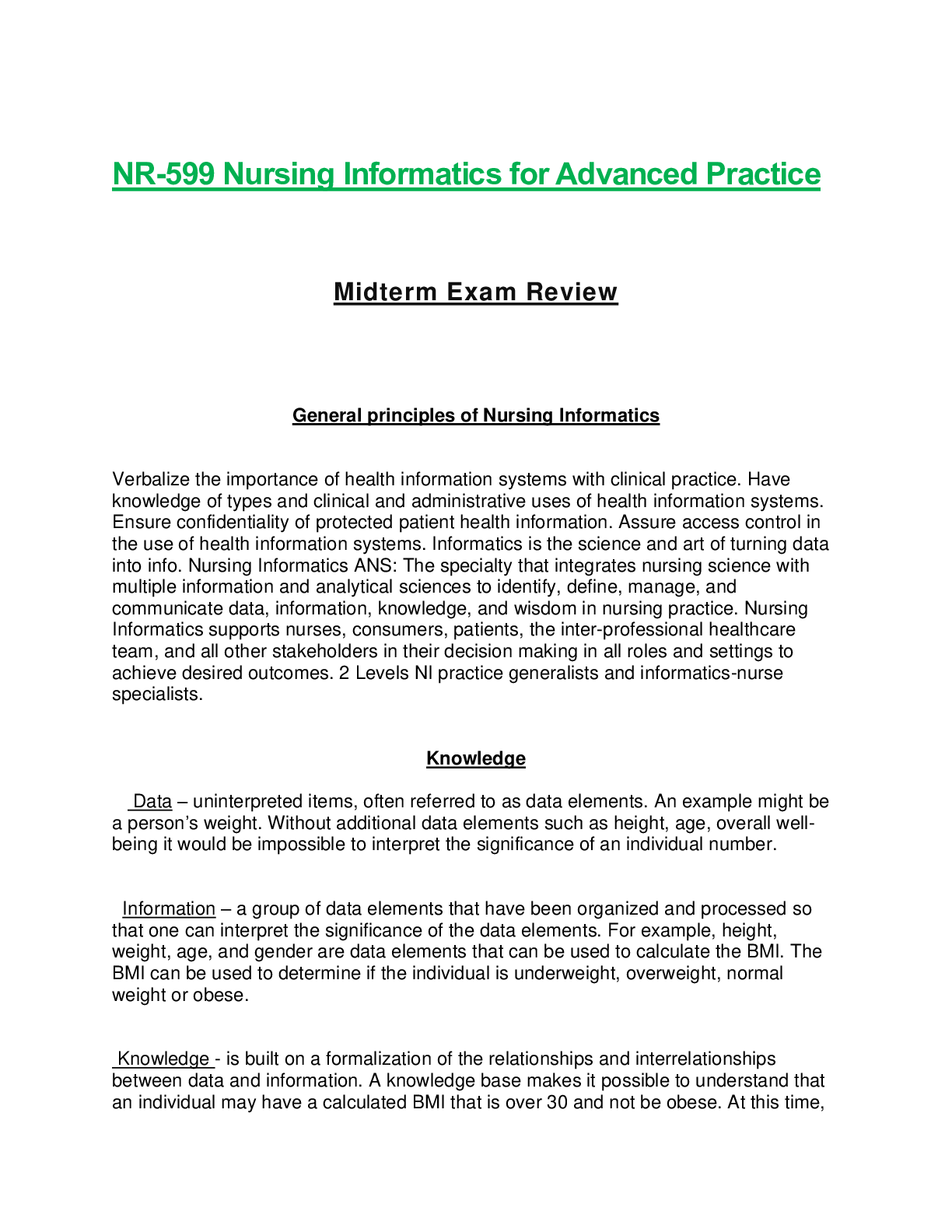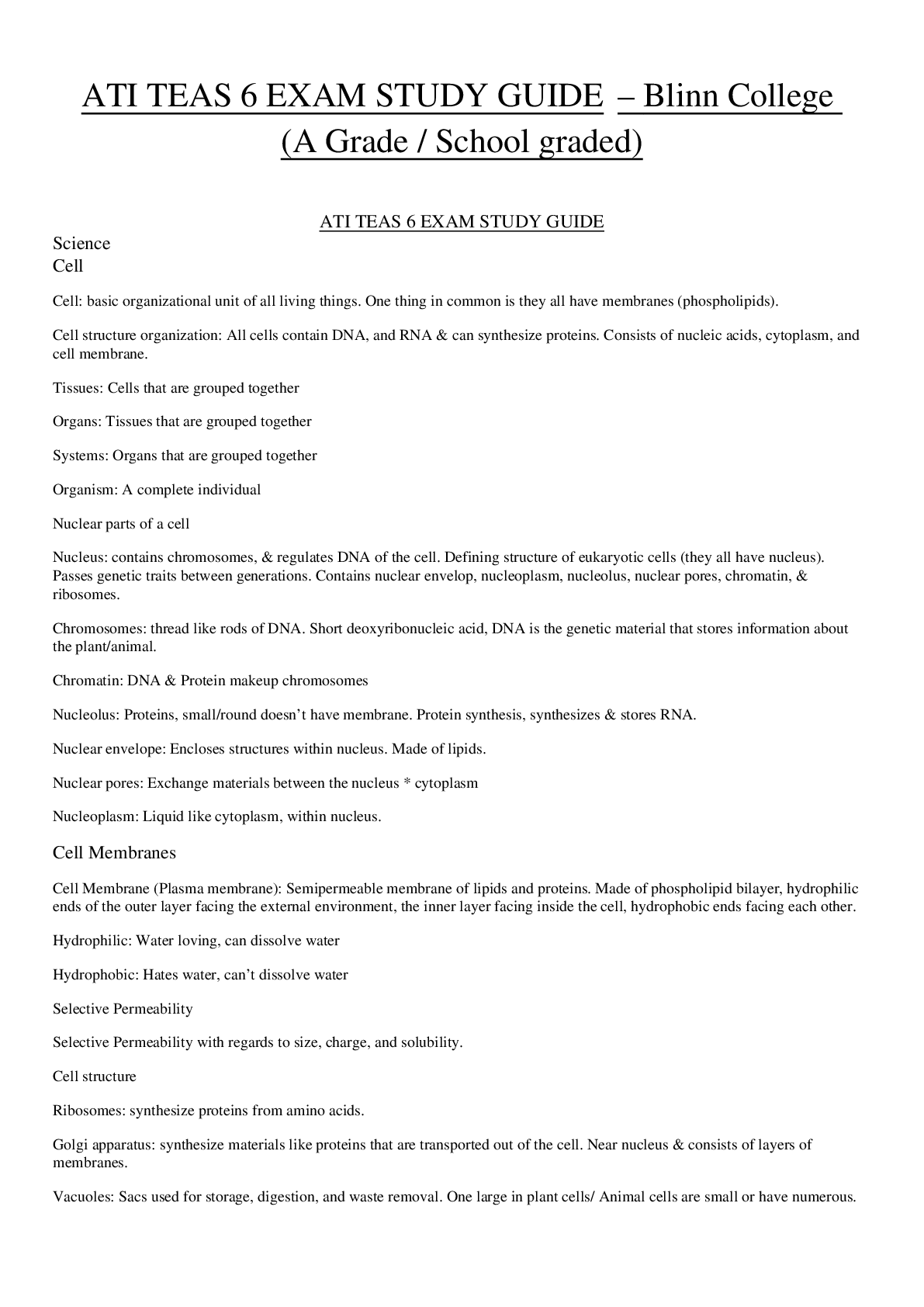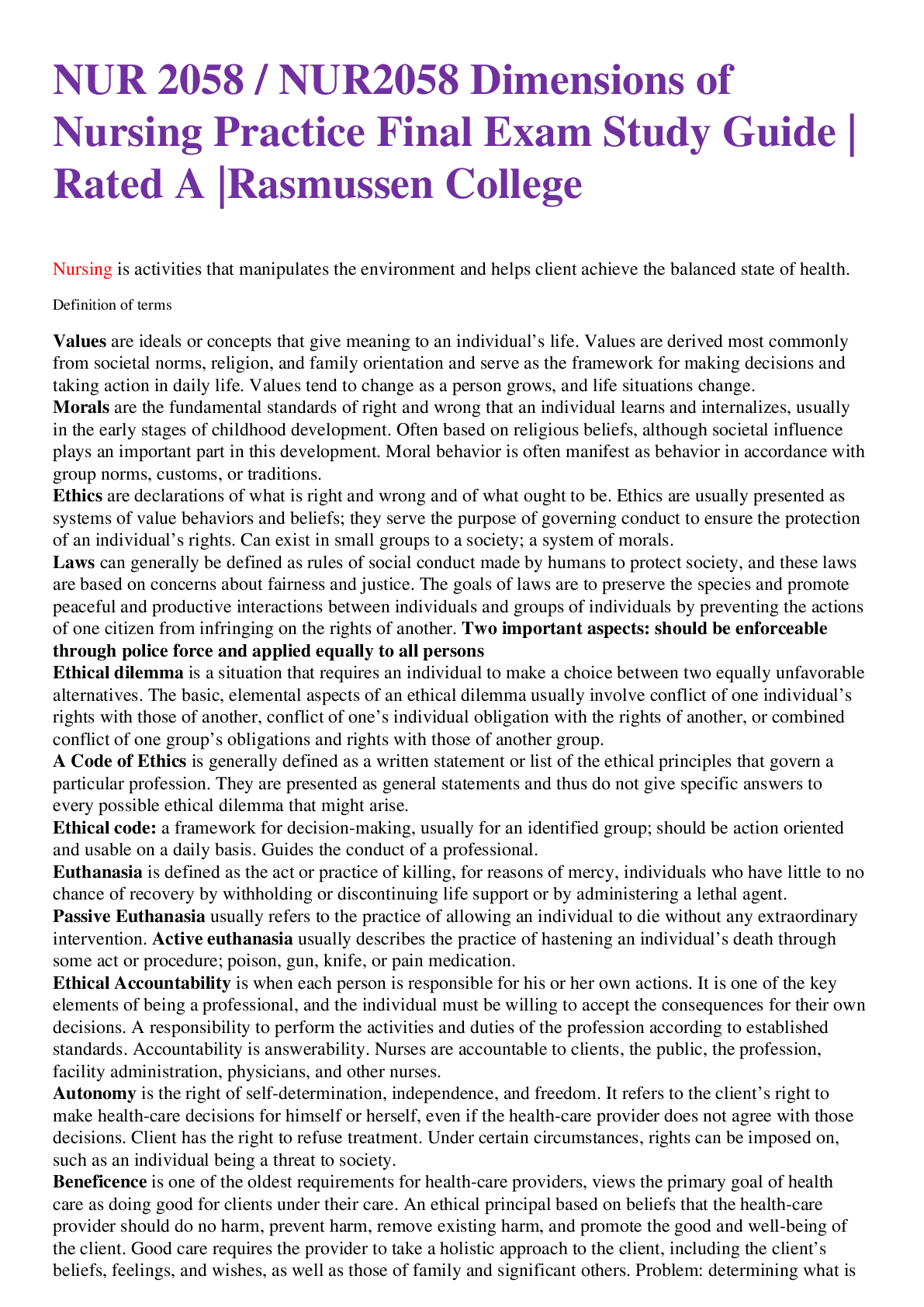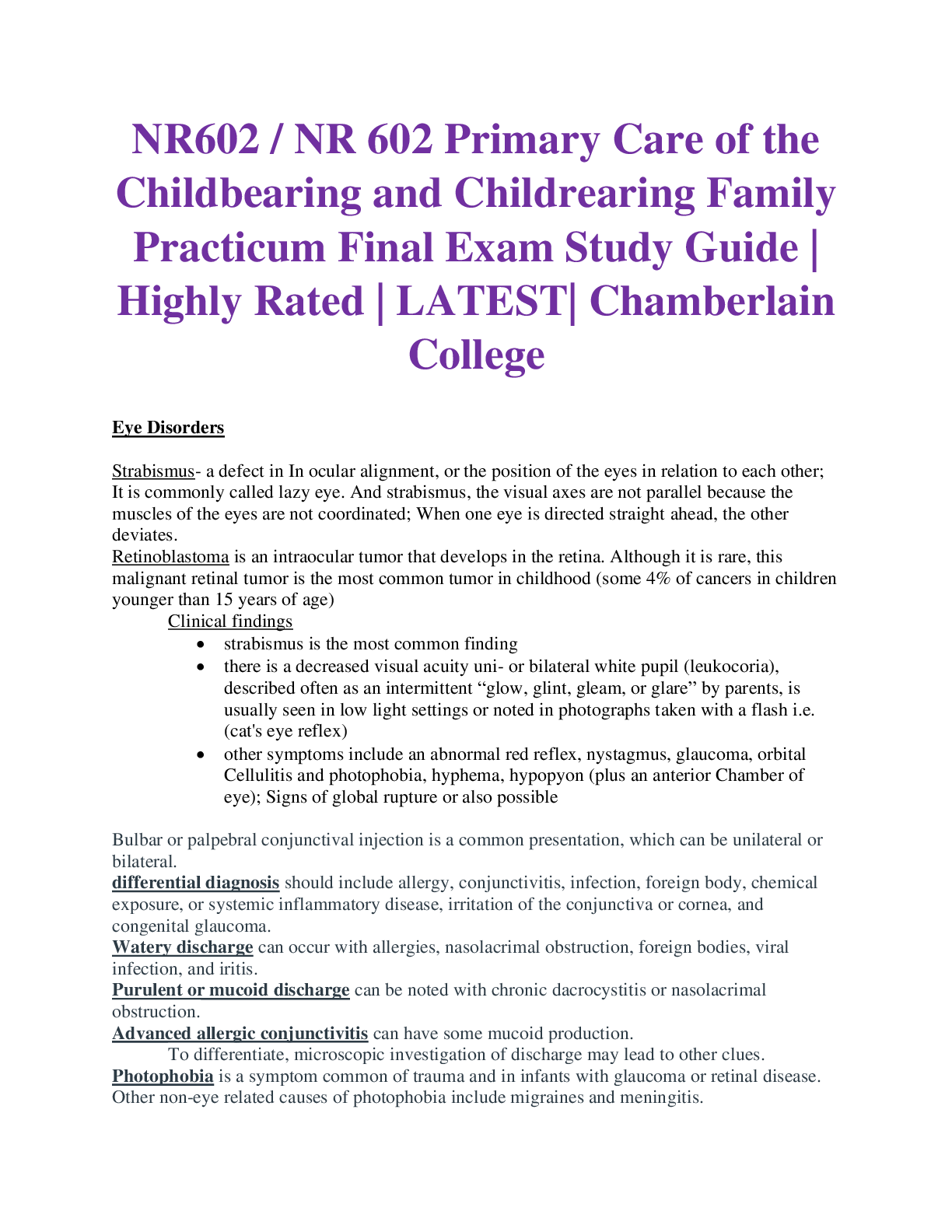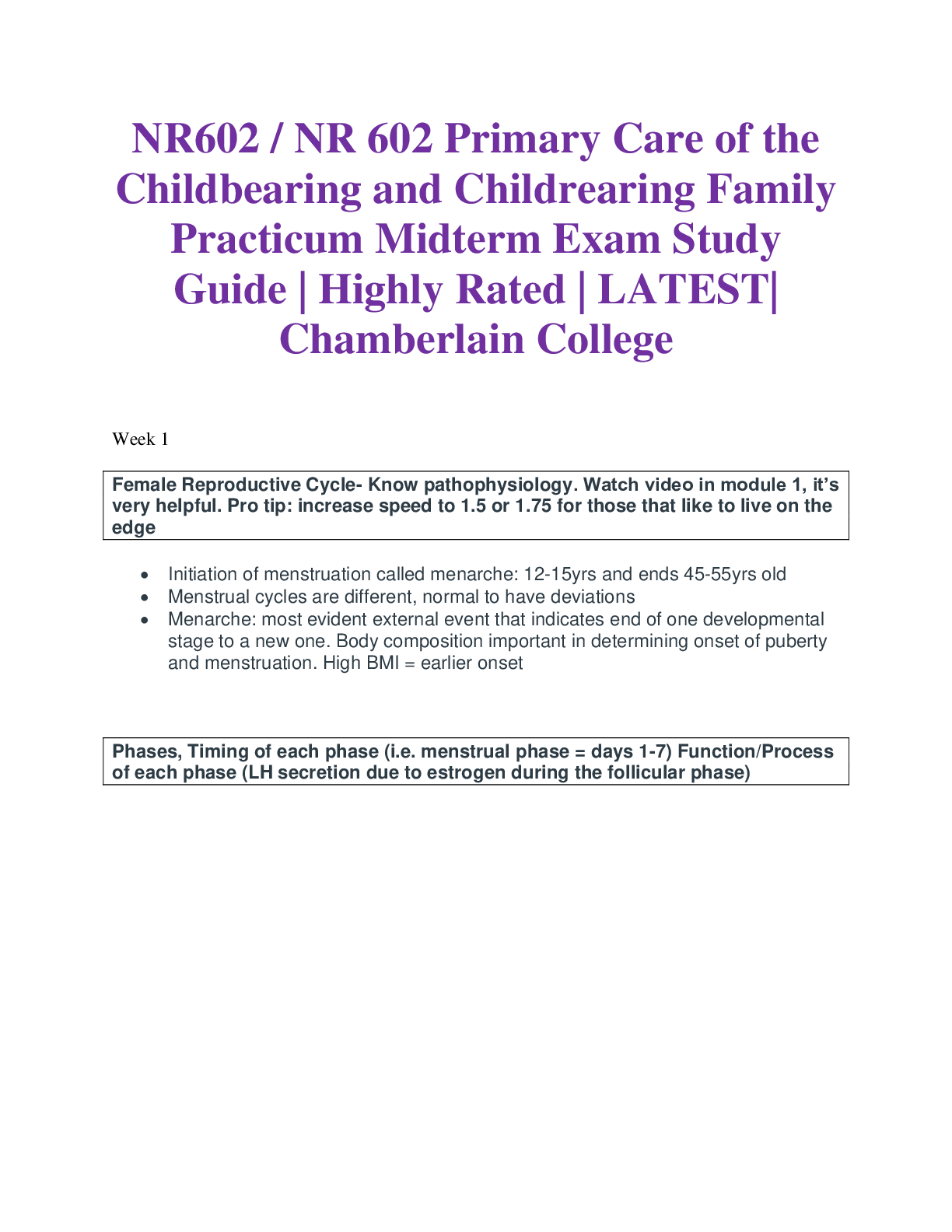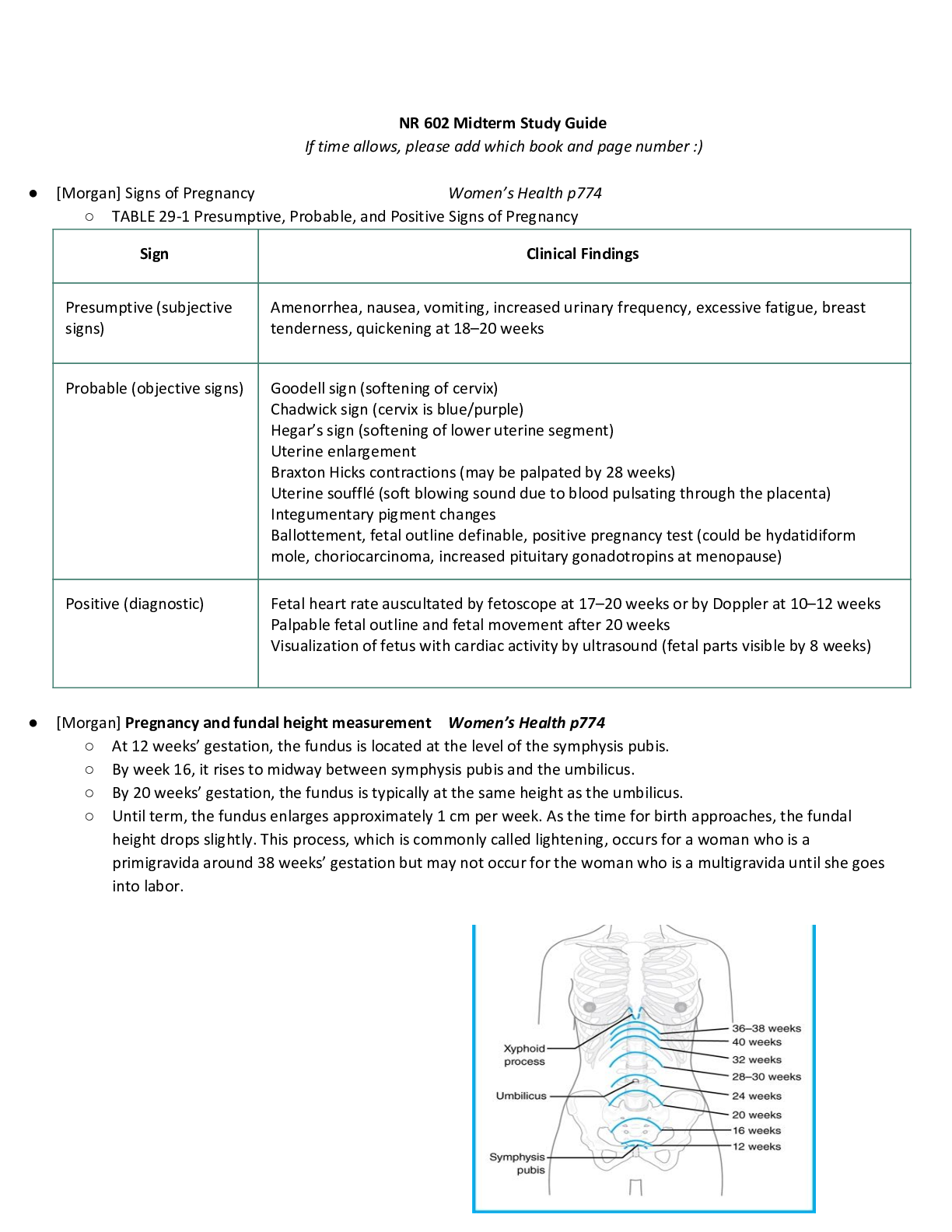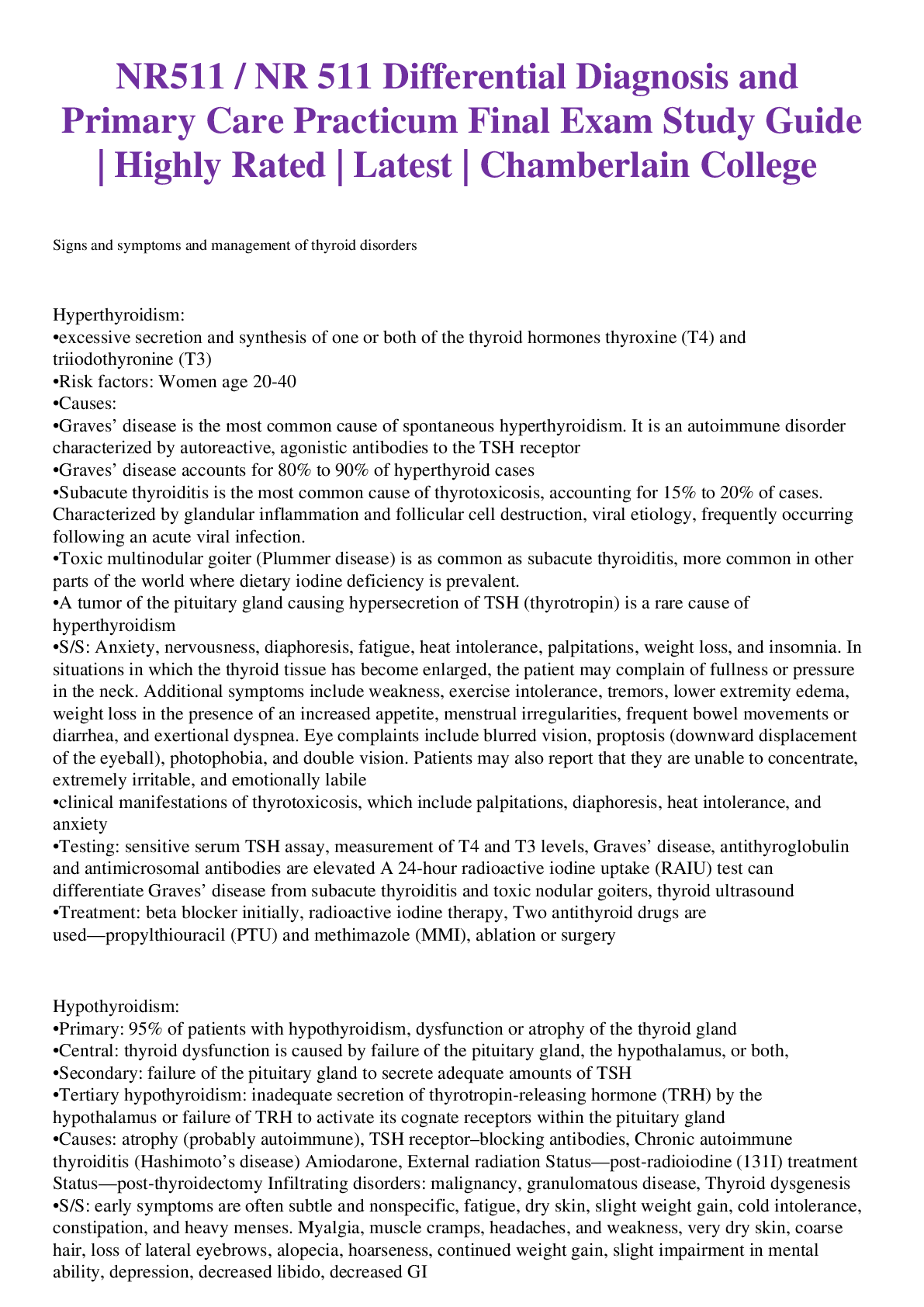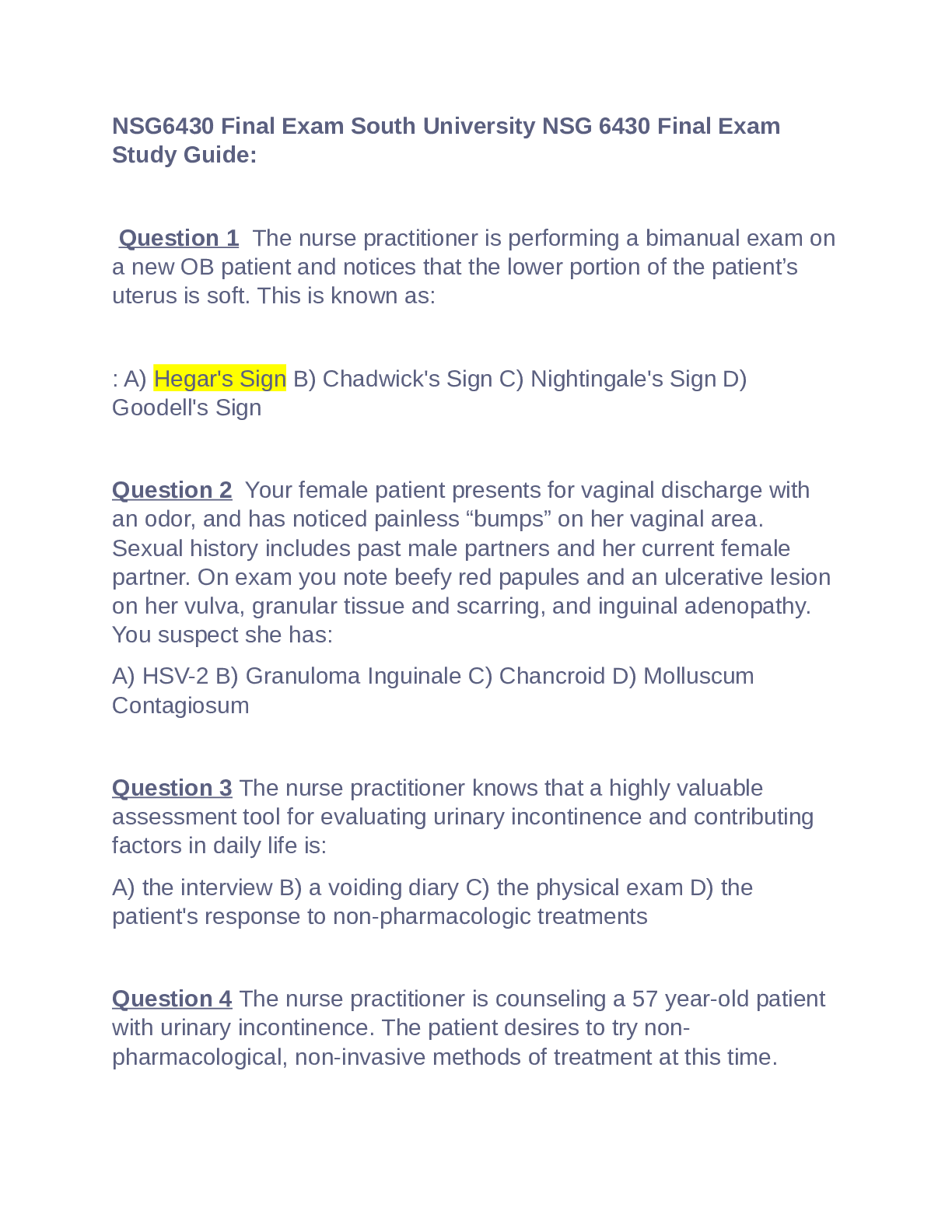*NURSING > STUDY GUIDE > NR293 NR 293 PHARMACOLOGY FOR NURSING PRACTICE FINAL EXAM STUDY GUIDE 2020 2021 CHAMBERLAIN COLLEGE (All)
NR293 NR 293 PHARMACOLOGY FOR NURSING PRACTICE FINAL EXAM STUDY GUIDE 2020 2021 CHAMBERLAIN COLLEGE OF NURSING
Document Content and Description Below
Three Months Ago: AIC 6.4% Fasting glucose 135mgs/dl Total Cholesterol: 230 (200-239; borderline high) >240 very high Triglycerides 180mgs/dl (less than 150) 150-199 is borderline high Ldl 180 (<1... 00 is normal) 130-159 is borderline high; 160-189 is very high Hdl 38 (40-59 is normal but higher is better) <40 is at increased risk of cardiac disease 5'8" weight: 220 pounds; BMI 33.5 vital signs: BP 146/90 P 70 Sao2 97% Random glucose finger stick in office: 130mgs/dl Less than 70 for LDL There’s no abnormal physical findings in the respiratory system to suggest early heart failure. But mild JVD present with trace edema in lower extremities. Eats out a lot - processed food, social drinking, occasional cigarette weekly; stopped Lisinopril one month ago, refuses HLD medication, will control with diet and exercise, allergy to METFORMIN 1. What Leads Demonstrate the ST Depression? 2. Is Lorene Hypertensive per ACA 2017 Guidelines? Compare the ACA guidelines to JNC 8 guidelines and discuss what treatment you recommend for her BP and why. 3. What is the Primary diagnosis causing Lorene's chest pain? Include ICD 10 codes (no differentials) 4. What other secondary diagnoses does Lorene have that should be addressed? (Include the rationale and a reference for your diagnoses) 5. Design a treatment plan and discuss how each intervention is applicable to Lorene's case. Consider the following interventions: ○ Labs ○ Durable Medical Equipment Diagnostic tests- discuss the goal/purpose ○ Any consultation with outside providers/services ○ Medications- discuss why you chose each specific medication 6. Referrals- who and why 7. Follow up- why and when 8. Education- specific and measureable 9. Lifestyle Changes- specific to her cultural preferences, values and beliefs Dr. Deering and class, 1. Leads I, II, and V2 to V6 demonstrate ST depression. 2. Lorene’s elevated blood pressure of 146/90 places her at stage 2 hypertension based on the American College of Cardiology (ACC) 2017 guidelines. Essential (primary) hypertension (ICD I10) would be one of Lorene’s secondary diagnoses. The ACC 2017 guidelines differ from the Eight Joint National Commision (JNC 8) guidelines in the blood pressure classification, as well as blood pressure goal targets based on age and comorbidities. Regardless of age and whether the patient has diabetes and/or chronic kidney disease (CKD), the ACC 2017 guidelines recommend a blood pressure goal of less than 130/90. For patients 60 years and older, JNC 8 guidelines recommend pharmacologic treatment for blood pressure goal of less than 150/90 (Armstrong, 2014). For patients younger than 60 years old, JNC 8 guidelines recommend a blood pressure goal of less than 140/90. The blood pressure goal of less than 140/90 is also recommended for patients who have CKD or diabetes (Armstrong, 2014). While primary hypertension is often asymptomatic, long term hypertension increases the risk of developing a host of health complications, including coronary artery disease, heart failure, stroke, peripheral vascular disease, and vision loss (Woo & Robinson, 2016). The initial pharmacologic treatment for both guidelines is similar, which includes thiazide diuretics, angiotensin-converting enzyme inhibitors (ACEI), angiotensin receptor blockers (ARB), and calcium channel blockers (CCB) (Armstrong, 2014). While the use of ACEI is considered first line, studies have shown that adverse effects of ACEI, such as cough and angioedema, are more prevalent in the African American population (Messerli, Bangalore, Bavishi, & Rimoldi, 2018). Angioedema, a rapid swelling under the skin, occurs in less than 1% of patients who take ACEI, but it occurs more frequently in African Americans. Since angioedema can be life-threatening as it may impair breathing with tongue or throat swelling, a thiazide diuretic is an appropriate substitute to help lower blood pressure (Messerli et al., 2018). Even though Lorene’s hemoglobin a1C is at the higher end of pre-diabetes, I would consider and treat Lorene as a diabetic especially with an elevated fasting blood glucose. The risk of developing type 2 DM is increased with a prediabetes diagnosis, especially if appropriate measures are not taken to optimize glycemic control. Currently, the JNC 8 guidelines recommend a thiazide diuretic or calcium channel blocker for African American patients with diabetes (Armstrong, 2014). Calcium channel blockers have demonstrated effectiveness in the management of hypertension in the African American population (Prendergast et al., 2014). There have been recent studies that show lower responsiveness in maintaining optimal blood pressure control with the use of ACE inhibitors in the African American population (Prendergast et al., 2014). With Lorene’s history of prediabetes, hypertension, hyperlipidemia, obesity, and ethnicity, I would prescribe Lorene a thiazide diuretic such as hydrochlorothiazide 12.5 mg orally once daily, and a calcium channel blocker, such as amlodipine 5 mg orally once a day. The only durable medical equipment I would recommend for hypertension is a blood pressure machine. Lorene should be encouraged to keep a daily log and record her blood pressure readings. She should bring the log at the next follow-up appointment in three months to evaluate how her blood pressure responded to the medication. There is no consultation for hypertension at this time. 3. Lorene complains of shoulder discomfort, shortness of breath, nausea, and sweating while exercising at a dance class three days ago. Lorene stated that her symptoms disappeared after she stopped exercising. Based on Lorene’s clinical presentation, the primary diagnosis that is causing her chest pain is stable angina pectoris (ICD I20.9). Substernal chest pain or discomfort occurs when the heart is not receiving enough oxygen supply, which results in myocardial ischemia (Cayley, 2014). Lorene is experiencing stable angina, which is chest discomfort that most often occurs with activity but disappears with rest (Arnett et al., 2019). This is due to poor blood flow through the blood vessels in the heart. The most common etiology of stable angina is ischemic heart disease, or coronary artery disease (Cayley, 2014). CAD occurs when cholesterol blocks the coronary arteries and cause narrowing of the arteries. Narrow coronary arteries lead to blood flow restriction and ultimately damages the arteries (Cayley, 2014). To compensate for this restriction, the heart works harder to efficiently pump the blood and ultimately cause more damage to the cardiovascular system (Sharma, Patel, Krishnamurthy, & Snyder, 2018). Positive pertinent findings of stable angina in this case study include: nausea, diaphoresis, shortness of breath, pain radiating to shoulder, and fatigue. Lorene also has risk factors that increase her risk of CAD. These include hypertension, tobacco use, and lipid disorders. An electrocardiogram (EKG) of patients with stable angina, or angina pectoris, can provide information for both diagnosis and prognosis, especially when it is obtained during episodes of chest pain (Cayley, 2014). The earliest electrocardiographic change often associated with ischemia is ST-segment depression, which is shown in Lorene’s recent EKG. Initially, I would refer Lorene to a cardiologist. At this time, Lorene is asymptomatic and denies chest pain during this visitation. She is hemodynamically stable and presents no signs of respiratory distress. However, I have to take into consideration that Lorene lives in a rural area, where access to quality health care services may be limited. A small population with shortages of physicians and specialists makes me concerned that Lorene may not be able to make an appointment with a cardiologist within a month. I prefer that Lorene sees a cardiologist sooner rather than later. [Show More]
Last updated: 1 year ago
Preview 1 out of 14 pages

Reviews( 0 )
Document information
Connected school, study & course
About the document
Uploaded On
Jun 16, 2021
Number of pages
14
Written in
Additional information
This document has been written for:
Uploaded
Jun 16, 2021
Downloads
0
Views
37


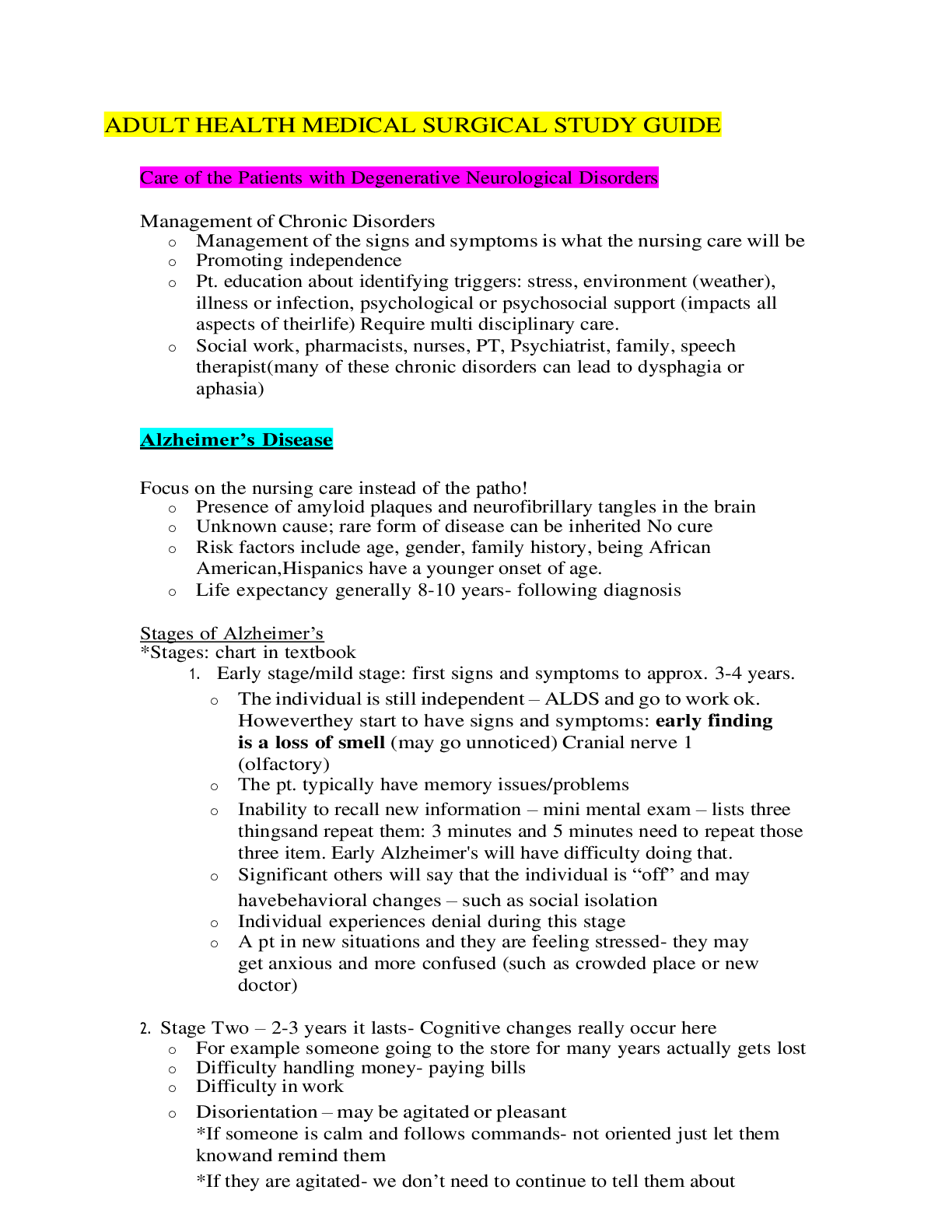
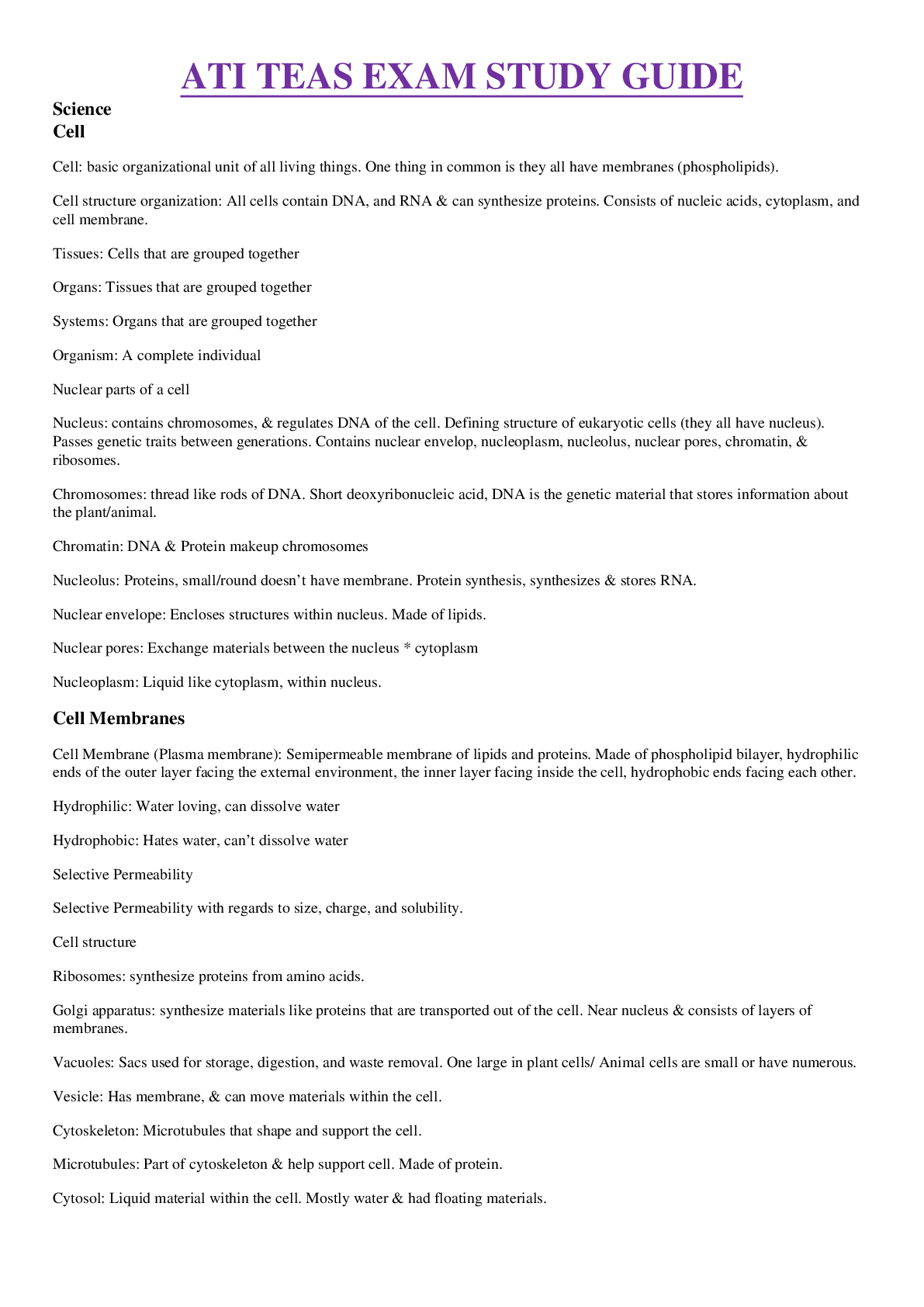

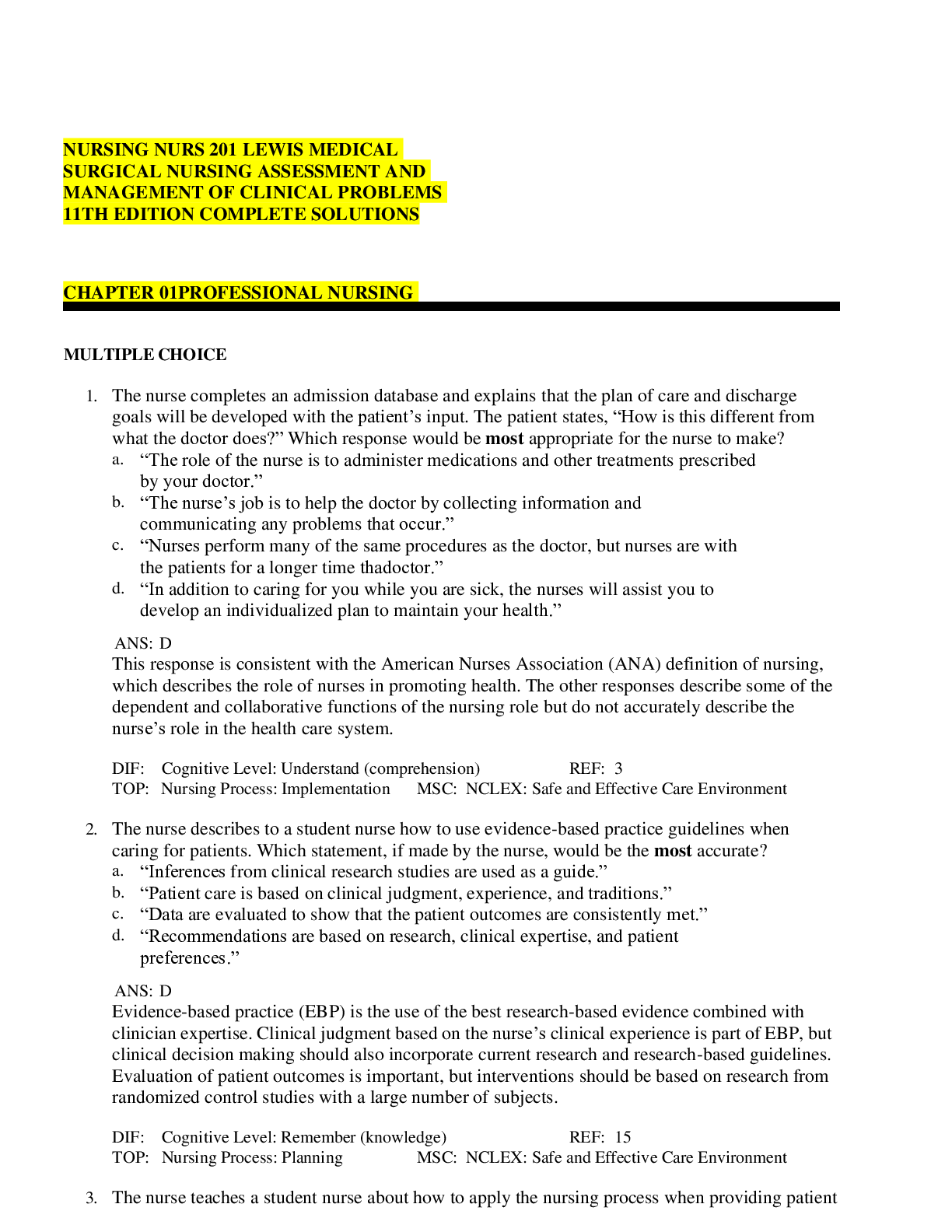

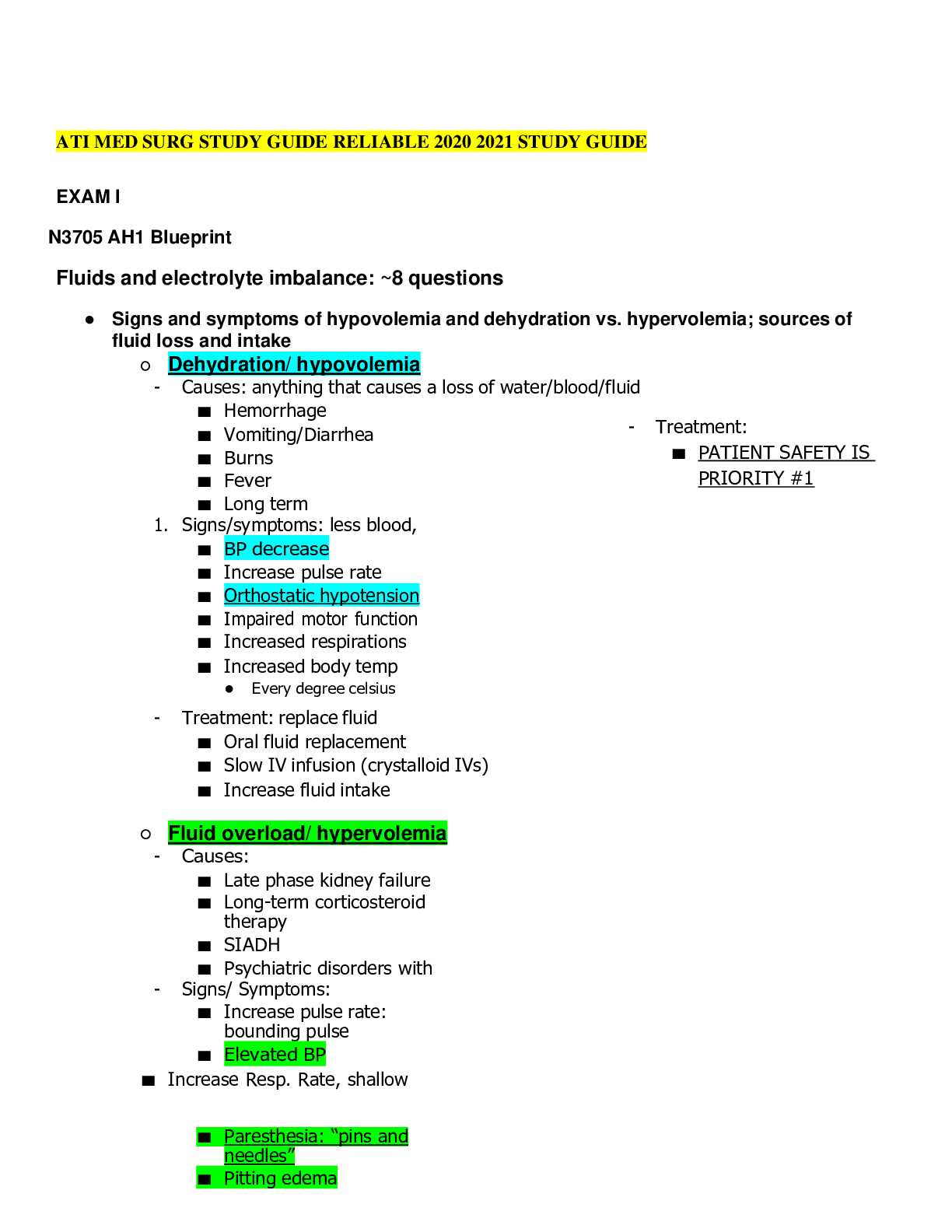
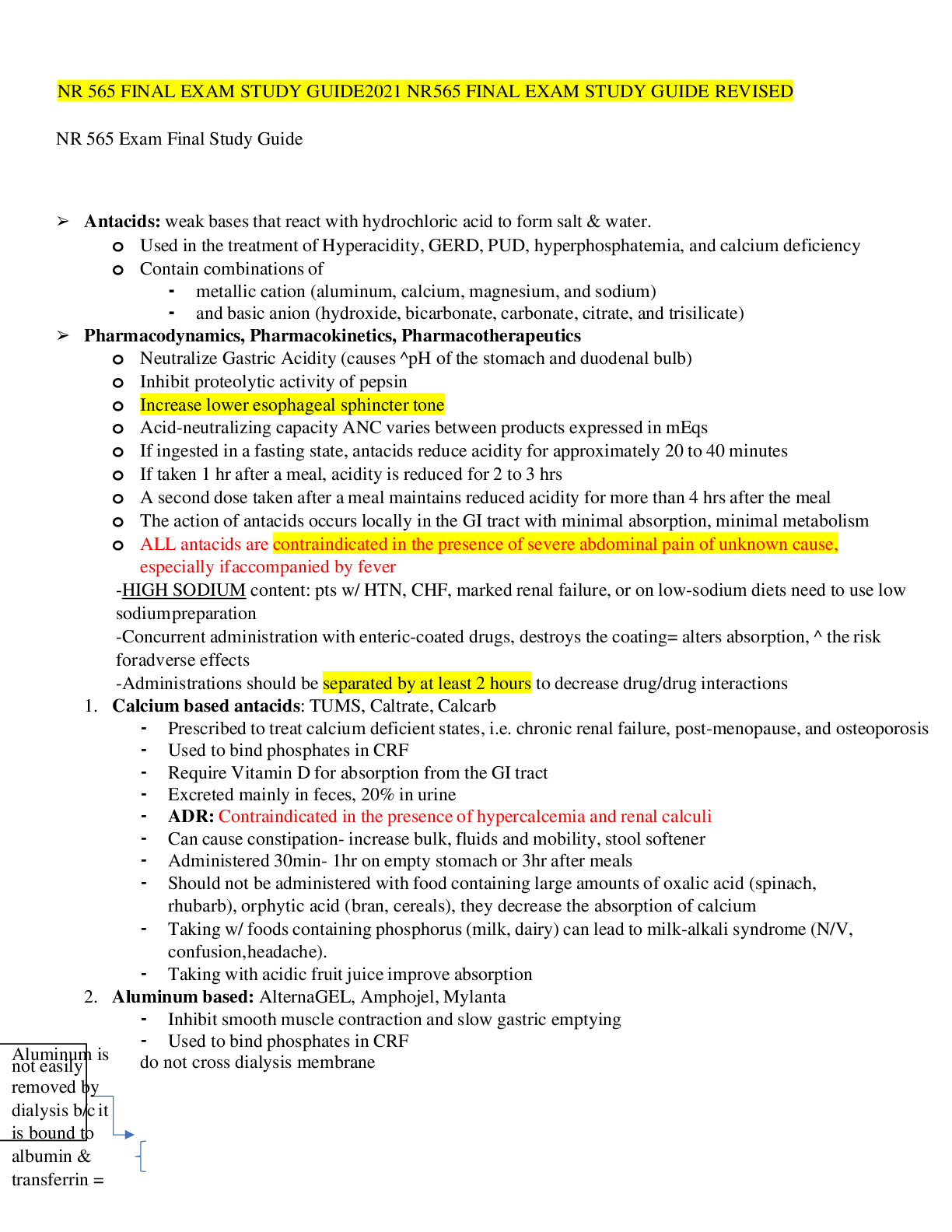








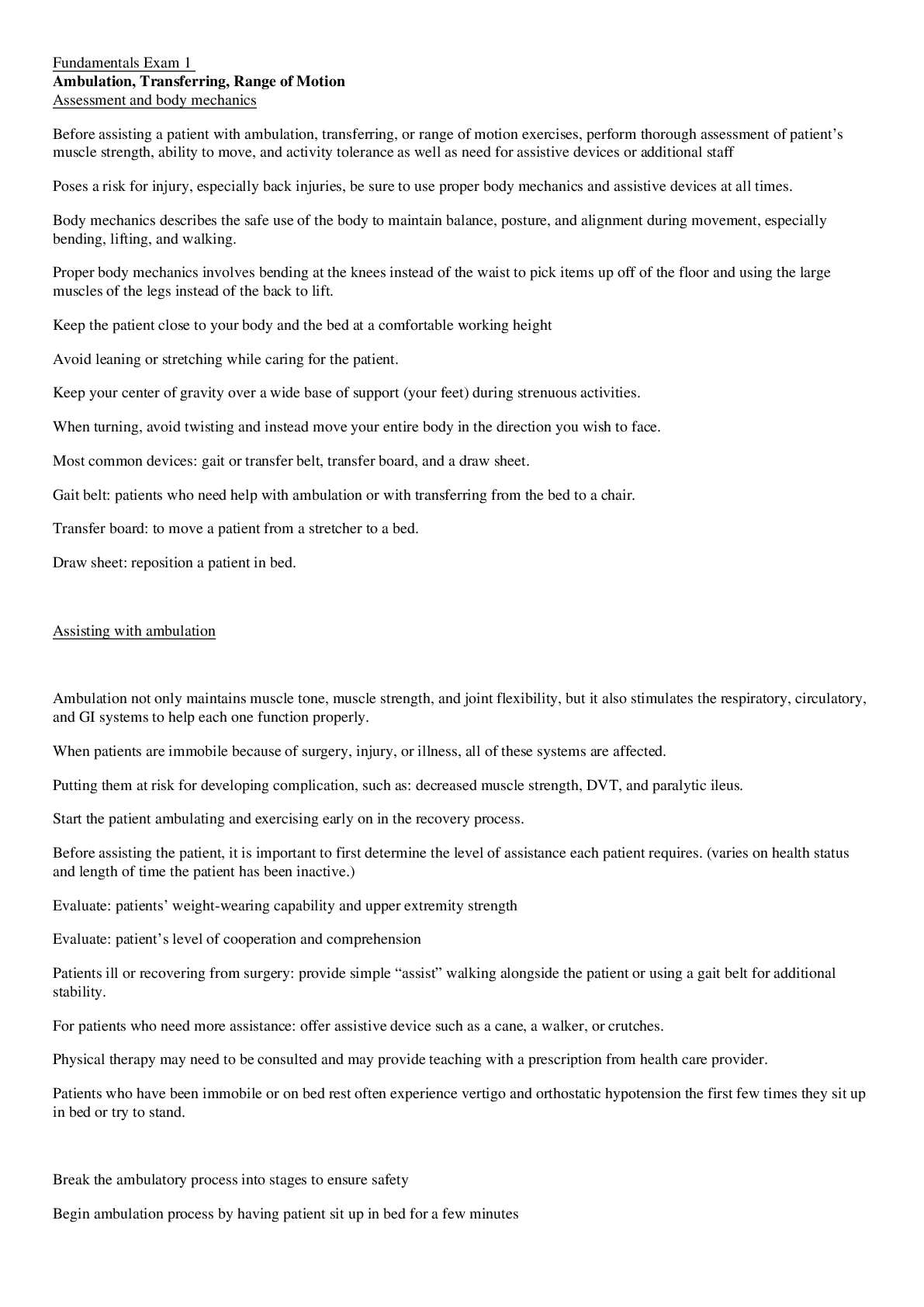
 Rasmussen College.png)
